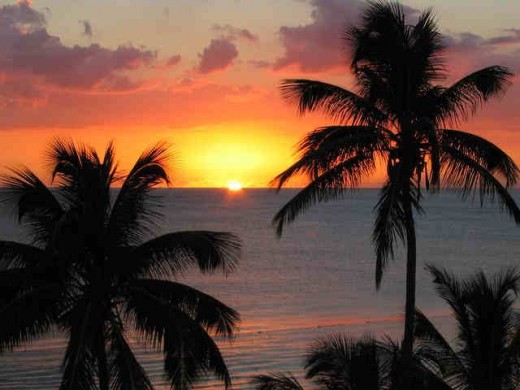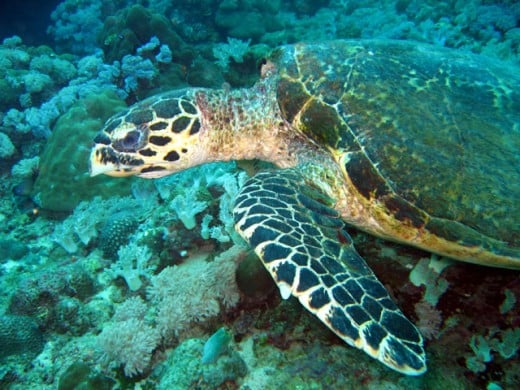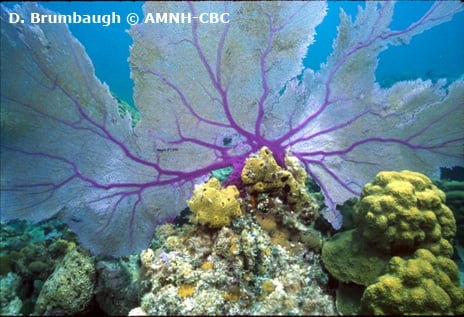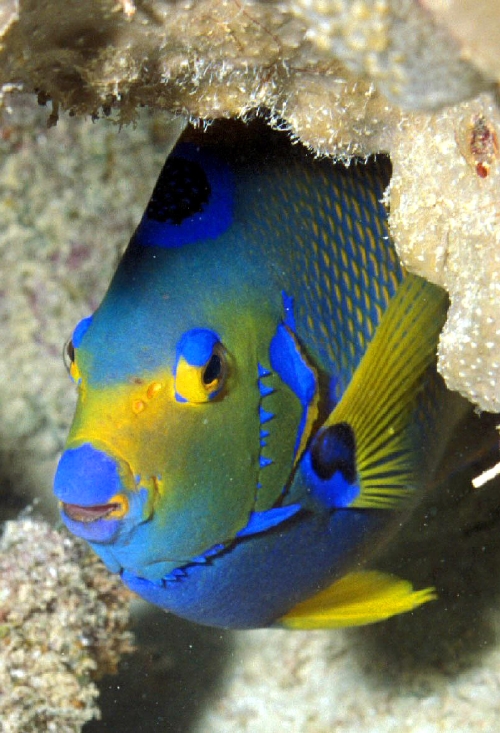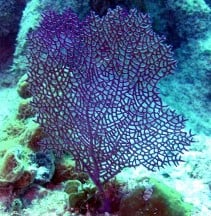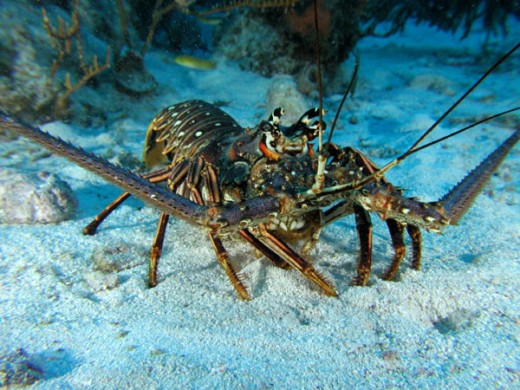Snorkeling in the Caribbean: Rincón, Puerto Rico







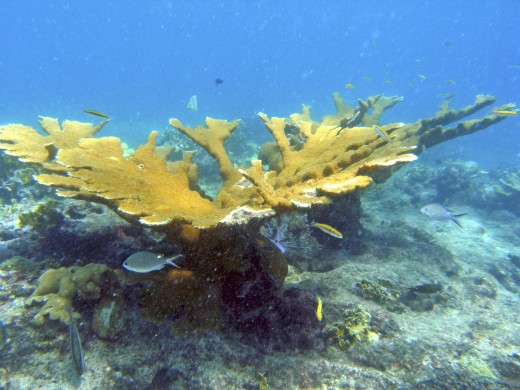
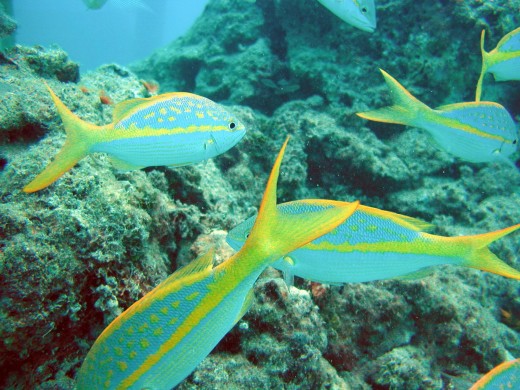
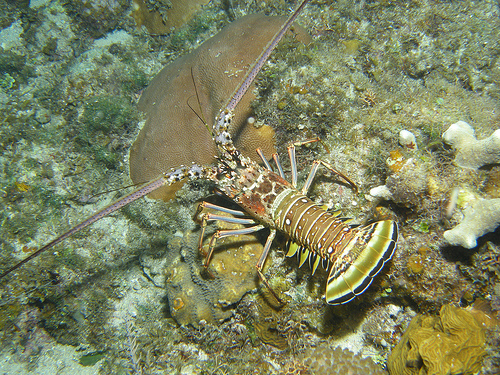
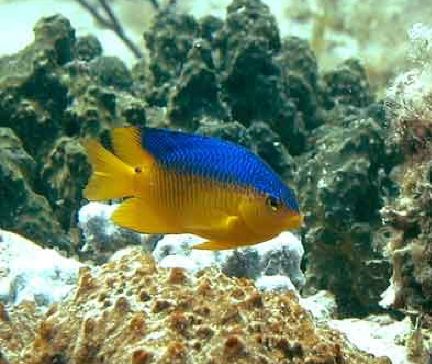
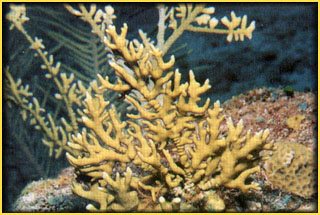
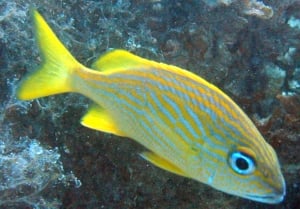
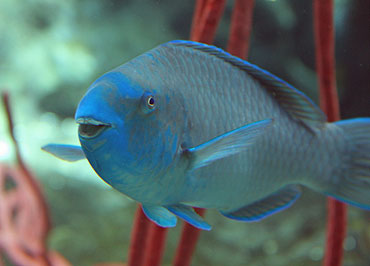
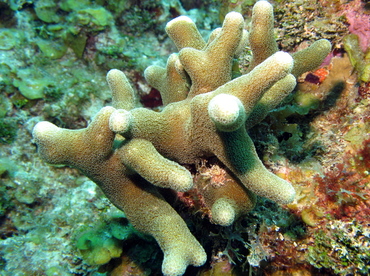
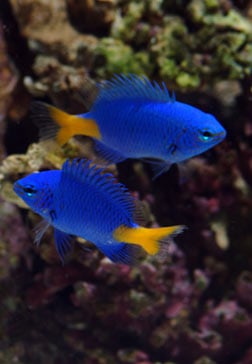
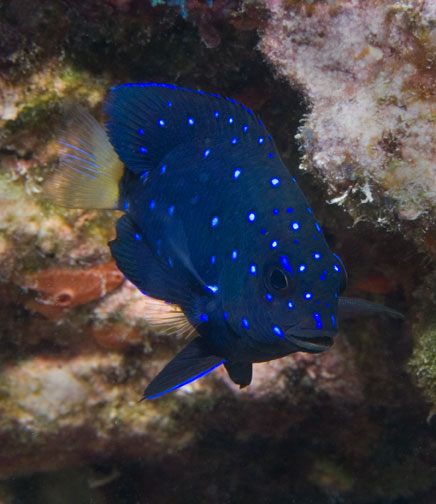
If you enjoy nature, the beauty of the ocean and gorgeous and paradisiac sunsets, you should take a break in the "City of the Gorgeous Sunsets", Rincón, in the Caribbean island of Puerto Rico. Although Rincón is famous for its ideal surfing swells, its beaches (particularly near and in Tres Palmas Natural Reserve), offers a great opportunity to have a pleasant and spectacular snorkeling experience. The wide variety of corals, sea plants, colorful and playful fishes and sea creatures with leave you in awe and with a sensation to stay there forever.
As soon as you get into the clear water, your attention will swing from one fish, coral or plant to another. Blue angel fishes, yellow brain corals, purple sea fans, a school of bluestriped juvenile grunts, turtle grass... tiny striped black and yellow fishes. Watch for the cracks on the sea floor, they are filed with various schools of juvenile fishes and you may also be able to see a spiny lobster hiding between the rocks or corals. As you swim your way in, you will continue to turn your head from one side to another, from back to forth... marveling yourself about the abundant sea life just a few meters off the shore. More brain and boulder corals, yellow and purple sea fans, a HUGE elk horn coral, check around it! WOW a school of yellow tail snappers, some blue-green angel fishes... is that a crab hiding beneath that coral?
But be very careful, coral reefs are very fragile; being touched or bumped usually destroys that area of coral. One should be extremely observant when snorkeling around coral reefs as it is possible for you to injure them and for them to injure you, particularly if they are fire corals. There are also forms of soft coral which do not build or live within a coral reef; they are called gorgonians. Gorgonians usually resemble plants; an example is the sea fan.
Sea fans move back and forth in a rhythmic motion... a school of sergeant major fishes pass by you while you continue the underwater exploration. Several colorful parrotfishes swim around Their jaw teeth are fused into a parrot-like beak, which they use for scraping algae and coral growth from reefs. It is not unusual to hear parrot fish munching on coral while you are snorkeling above them. As you continue, you will encounter star corals, greenish tubular sponges, stoplight and redband parrotfishes, abundant and colorful sea fan garden, a boat fish. Every elkhorn coral that is around you, is surrounded by small schools of medium size and adult fishes... bluestriped, French and white grunts, and the occasional and very cute juvenile yellow tail dameselfish.
You're been snorkeling for just about twenty minutes, and you may feel that you have seen it all because of the colorful variety of sea life that you have already seen, but what lies ahead will make your day. After you got distracted by a couple of playful butterfly fishes and a snapper schoolmaster hanging around a coral and a bunch of blue angelfish, you detect the extremely gorgeous queen blue angelfish (shown on the slide show). Suddenly, you notice a juvenile hawksbill turtle or carey (slide show) calmely swimming near you looking for some small sponges, their primarily food. You are lucky to see one of them and then, another adult one appears; the carey is a critically endangered creature since 1996 therefore, its capture and trade is outlawed worldwide. So admire their beauty and graciousness and let it live.
The hawksbill turtle has several characteristics that distinguish it from other sea turtle species. Its elongated, tapered head ends in a beak-like mouth and its beak is more sharply pronounced and hooked than others. The hawksbill's arms have two visible claws on each flipper and a distinctive characteristic is the pattern of thick scutes that make up its carapace.
After a day enjoying the sea life under the water, on the shallow shore waters or on the sand, you should sit or lay on the beach to watch the beautiful horizon... some turtles may show their heads, and if you're lucky enough you may see some playful dolphins at the distance. If you go between January and March you may be even luckier if you see the tail or the back of a humpback whale. After a gorgeous day, you may also enjoy the Sun as it goes down painting the blue sky, white clouds and the ocean in yellow, orange and red... after a long day helping you take a clear view of the underwater life, the Sun will submerge on the sea to enjoy the life under the ocean.
Diving with a Humpback in Puerto Rico
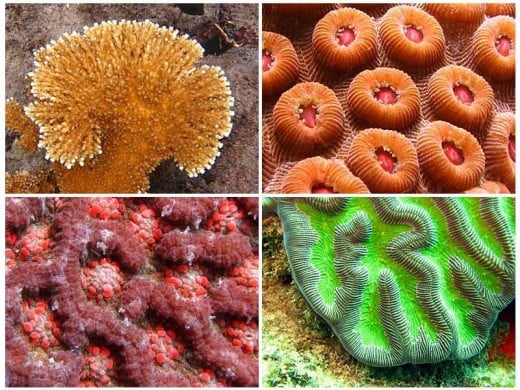
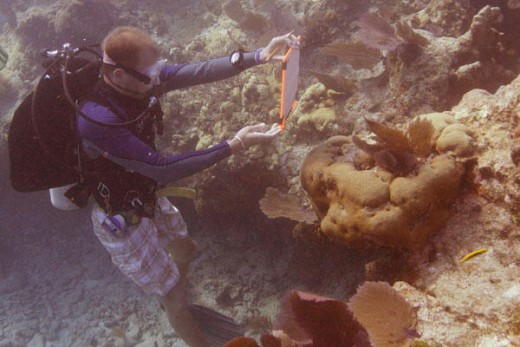
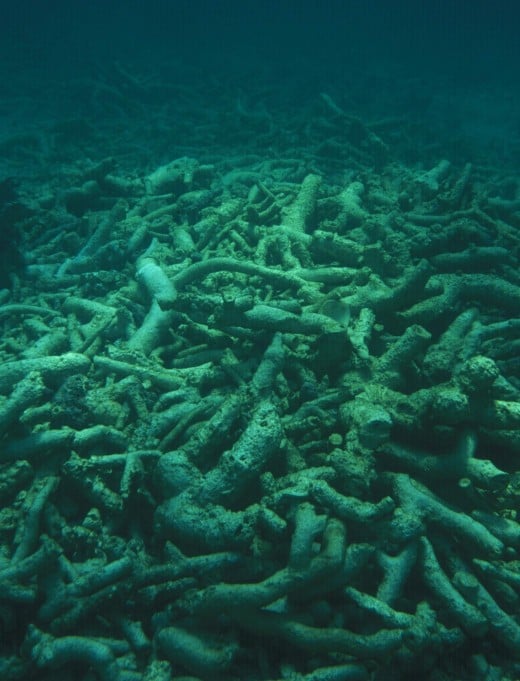
Coral reefs must be protected
Coral reefs throughout the Caribbean have been comprehensively 'flattened' over the last 40 years, according to a study by the University of East Anglia (UEA), authored by Toby Gardner, Isabelle Côté, Jenny Gill, Alastair Grant and Andrew Watkinson. This group of researchers found that the vast majority of reefs have lost their complex structure and become significantly flatter and more uniform. Some of those reefs have been virtually wiped out in two major periods of reef flattening. The first occurred when a widespread disease killed about 90 per cent of the Elkhorn and Staghorn corals in the late 1970s. The second period has been underway more recently and is thought to have been caused by an increase in the intensity and frequency of coral bleaching events, as a consequence of human-induced climate change increasing sea surface temperatures.
Other studies conducted in the Caribbean by NOAA and the USGS also have found other changes in coral reef habitats over the past 30 years. Those changes are the result of many factors, including warming ocean temperatures, coral diseases, and a rise in sedimentation and pollution from coastal development, smothering by sediments released by soil erosion and deforestation, and the flow of Saharan dust over the Caribbean skies. Overfishing has also led to declines of many fish species, and now seems to also be removing those that are important for keeping the reefs free of algae.
All of these factors are stressing the reefs and making them less able to recover from disturbances such as hurricanes. Human expansion in coastal areas inevitably poses severe risks to the maintenance of complex ecosystems such as coral reefs. Researcher Camilo Mora from Dalhousie University, Halifax, Canada have said:
On one hand, coral reefs are maintained due to intricate ecological interactions among groups of organisms. For instance, predators prey upon herbivorous, herbivores graze on macroalgae, and macroalgae and corals interact for their use of hard substrata. Given the intensity of these interactions the effects of a threat in anyone group may escalate to the entire ecosystem. On the other hand, the array of human stressors arising from changes in land use, exploitation of natural resources and increases in ocean temperature (and perhaps acidification) due to an increasing demand for energy, are significantly affecting all major groups of coral reef organisms. The simultaneous effect of human threats on coral reef organisms and the potential escalation of their effects to the entire ecosystem highlight the critical situation of coral reefs and the need to adopt an ecosystem-based approach for conservation and an integrated control of multiple human stressors,
Coral loss can have serious consequences, including the collapse of reef fisheries, a reduction in tourism, and increased coastal damage from hurricanes. So, they must be protected and respected in order to be enjoyed.
If you would like to learn more about this topic, check this studies:
- Decline of corals across the Caribbean by Toby Gardner, Isabelle Côté, Jenny Gill, Alastair Grant and Andrew Watkinson
- Coral Reef Bleaching by Jason Buchheim
- CORAL BLEACHING: Saint Barthelemy and the wider Caribbean by Deborah Brosnan

Diving in Puerto Rico and the Caribbean
FIFTY FACTS ABOUT WIDER CARIBBEAN CORAL REEFS
- The Caribbean region has an estimated 26,000 km2 of coral reef surface, possessing an estimated 7% of the world’s shallow coral reefs.
- In the Greater Antilles, coral reefs cover over 8,600 km2.
- The Eastern Caribbean has a coral reef area of 2,600 km2.
- The Wider Caribbean region has over 285 Marine Protected Areas (MPAs), containing 20% of the region’s coral reefs.
- Time series data show declines in live coral cover from 1993 to 2001 in almost 2/3 of the sites investigated.
- Human activities threaten 2/3 of the Caribbean’s coral reefs, placing 1/3 at high risk.
- About 9,000 km2 of coral reef is threatened by increasing sedimentation and pollution related to land use activities.
- Coastal development including construction, urban run-off, tourist development and sewage
- discharge threatens 1/3 of the reefs of the Caribbean.
- A sewage pollution problem exists in almost 1/4 of the coral reefs surveyed since 1998.
- Treated sewage accounts for less than 20% of total sewage generated in the Caribbean.
- Only 1/4 of hotel and resort wastewater treatment plants are in good operating condition.
- In 1996, 3/4 of treatment plants operated by hotels and resorts did not comply with effluent
- discharge criteria.
- In the Caribbean, daily water consumption per tourist is an estimated 300 liters/day, which is about 3 times the per capita demand for domestic consumers.
- Coastal development resulting from population growth and intensive tourism, along with
- overfishing threatens over 80% of Caribbean reefs.
- Thirty six percent of coral reefs in the region lie within 2 km of inhabited land.
- The population living within 10 km of the Caribbean coast grew from 36 to 41 million during 1990-2000.
- Increases in coastal zone population density leave reef resources susceptible to exploitation to provide livelihoods and sustenance to coastal inhabitants.
- Overfishing is the most pervasive direct human threat to reefs and threatens 60% of them.
- Overfishing poses greatest threat to the Eastern Caribbean reefs followed by coastal development, sedimentation and pollution.
- The ecological balance of reefs is altered by overfishing due to increased algal growth and
- decreased coral cover.
- Caribbean coral reefs have evolved from a coral dominated to an algal dominated state over the past decades.
- Marine based sources of pollution such as wastewater discharge from cruise ships and other vessels, and leaks and spills from oil infrastructure threaten 15% of the region’s reefs.
- In the last 20 years, cruise ship tourism has quadrupled worldwide, with 58% of the world’s cruiseship passengers occupying the Caribbean cruise industry.
Source: UNEP, Caribbean Environment Programme and Yyor [http://www.iyor.org/focalpoints/orgs/unep-car/50_Facts_About_WCR_Coral_Reefs.pdf]

